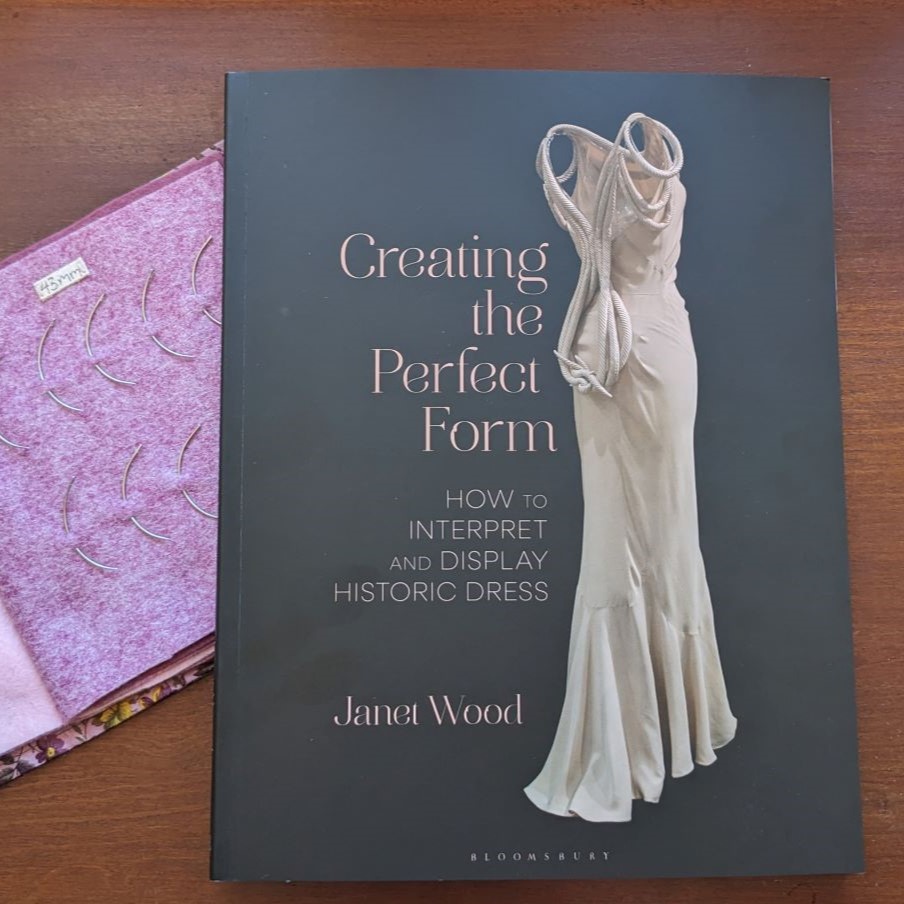I’ve been preparing to teach an upcoming workshop on costume mounting, and looking for approachable resources to recommend to people with limited experience. Conveniently, Janet Wood’s book Creating the Perfect Form: How to Interpret and Display Historic Dress was just published on 27 June 2024 by Bloomsbury.
Summary
This new book starts at the very beginning of the costume mounting process and guides you through to the finished product. It begins by assessing the condition of garments, with sage advice to consult a textile conservator (I’m definitely not biased). It then moves onto determining the date of costumes by examining primary and secondary sources such as paintings, fashion plates, dressmaking sources, etc. Wood provides an abbreviated history of British women’s fashion trends, silhouettes, and underwear from the 18th century until the 1950s. Although this is generally the domain of curators, not conservators, I also know that not every institution has an expert textile historian on call for mounting decisions. This section will be a helpful, quick reference to general garment shapes, but shouldn’t replace further research if at all possible.

Onto the meat of mounting, Janet Wood gives a very in-depth 16 pages on measuring costumes. This may seem bizarre to anyone not familiar with mounting, but as Wood points out, accurate measuring is crucial to minimising trying garments on and wasting time and resources. The book goes on to selecting a mannequin or bust form, tools for mounting, plans for padding, and stitching top covers. Being able to do something and being able to teach how to do something are two different skills. Wood does both, providing the reader with a clear explanation of the steps, points for consideration, and crucially why things are done this way. Her book goes on to explain making toiles for mounting delicate garments, as well as mounting accessories such as petticoats and arms. She also includes diagrammed patterns for making different petticoats and arms.
To benefit from this book, the reader does not need previous experience in costume mounting, however a knowledge of basic sewing and garment construction is necessary. Even a more experienced mounter could benefit from examining someone else’s approach. One drawback of the book is that it focuses exclusively on British women’s costume from the 18th century to the 1950s. However, many of the points on mounting could be transferred to mounting men’s garment or clothing from other contexts. This is, after all, a book on costume mounting, not an encyclopedia of costume.

Conclusions
Overall, this book is a good introduction to mounting from start to finish for beginner and experienced mounters. I would particularly recommend this to smaller institutions who do not have access to experts in costume history and mounting. In addition to being a valuable resource, Creating the Perfect Form by Janet Wood is also only £22.49 on the Bloomsbury website!
If after reading this book you still require help to safely and effectively mount costume, please contact Rossi Conservation for display advice.
